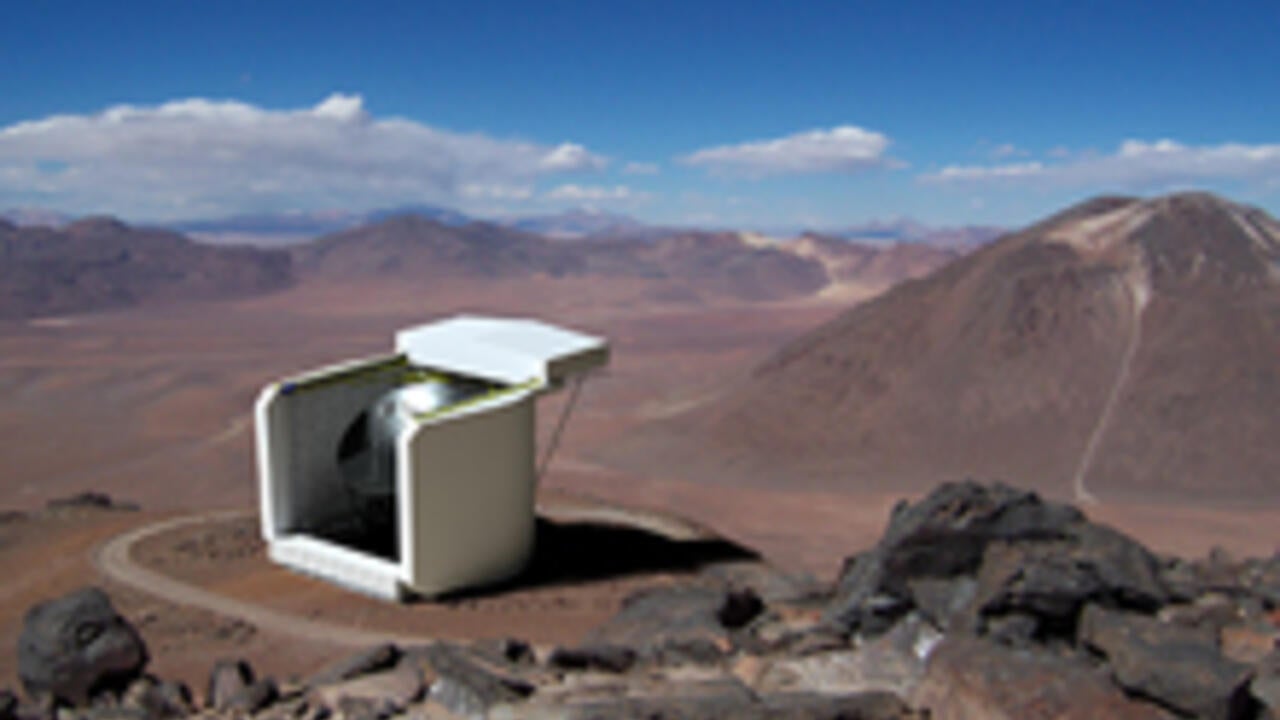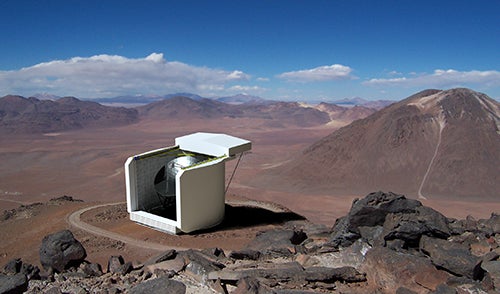
Telescope promises new insight into ancient galaxies
Waterloo astronomer leads space research project in Chilean desert

Waterloo astronomer leads space research project in Chilean desert
By Katharine Tuerke Faculty of Science
Traditionally, astronomy was limited to studying objects we could see, such as stars and planets. But a new submillimetre telescope — the largest, highest and most precise of its kind – will soon change that.
“Many of the most interesting objects in the universe emit light in the far-infrared and submillimetre range, which is invisible to the naked eye,” said astronomer Michel Fich from the University of Waterloo.
The Cerro Chajnantor Atacama Telescope (CCAT) will be the largest and most powerful submillimetre telescope in the world.
Fich, a professor in the Department of Physics and Astronomy in the Faculty of Science, is leading a group of researchers at eight Canadian universities in an international effort to build CCAT — a $150-million state-of-the-art submillimetre telescope that will give astronomers a peek at the universe as it was 10 to 12 billion years ago.
While optical telescopes are great for observing light-emitting objects such as stars, submillimetre telescopes are perfect for probing dark, cold interstellar material, such as black holes and primordial radiation emitted after the Big Bang.
"We're trying to understand our history and the origins of the universe," said Fich. "We live in this galaxy and we really don't know a lot about it."
The CCAT will help astronomers answer questions about how galaxies collide, merge, interact and evolved. It will also help scientists learn more about how planets, stars and solar systems formed.
With a dish 25 metres in diameter, CCAT is designed to capture a very wide view of space. It’s not the first submillimetre telescope, but will be substantially larger and 100 times more sensitive than its predecessor. Outfitted with a state-of-the-art camera, CCAT is expected to map the sky 1,000 times faster, and with better resolution, than the best detector in the world.
The CCAT will be built 5,600 metres above sea level near the summit of Cerro Chajnantor in the Chilean Atacama desert. Submillimetre telescopes are effective only at elevations above 4,000 metres as the Earth’s atmosphere blocks much of this important wavelength range.
In addition to gathering research data this international facility will also serve as a world-class training facility for students from more than 14 universities. CCAT is scheduled to be operational by 2020.

Read more
Waterloo research is leading the fight against an invasive plant threatening Ontario wetlands

Read more
Wastewater monitoring indicates early upward trends in COVID-19 and Influenza

Read more
The InnoHK Centre for Eye and Vision Research aims to bring eye and vision research to market through Waterloo-Hong Kong partnership
The University of Waterloo acknowledges that much of our work takes place on the traditional territory of the Neutral, Anishinaabeg, and Haudenosaunee peoples. Our main campus is situated on the Haldimand Tract, the land granted to the Six Nations that includes six miles on each side of the Grand River. Our active work toward reconciliation takes place across our campuses through research, learning, teaching, and community building, and is co-ordinated within the Office of Indigenous Relations.